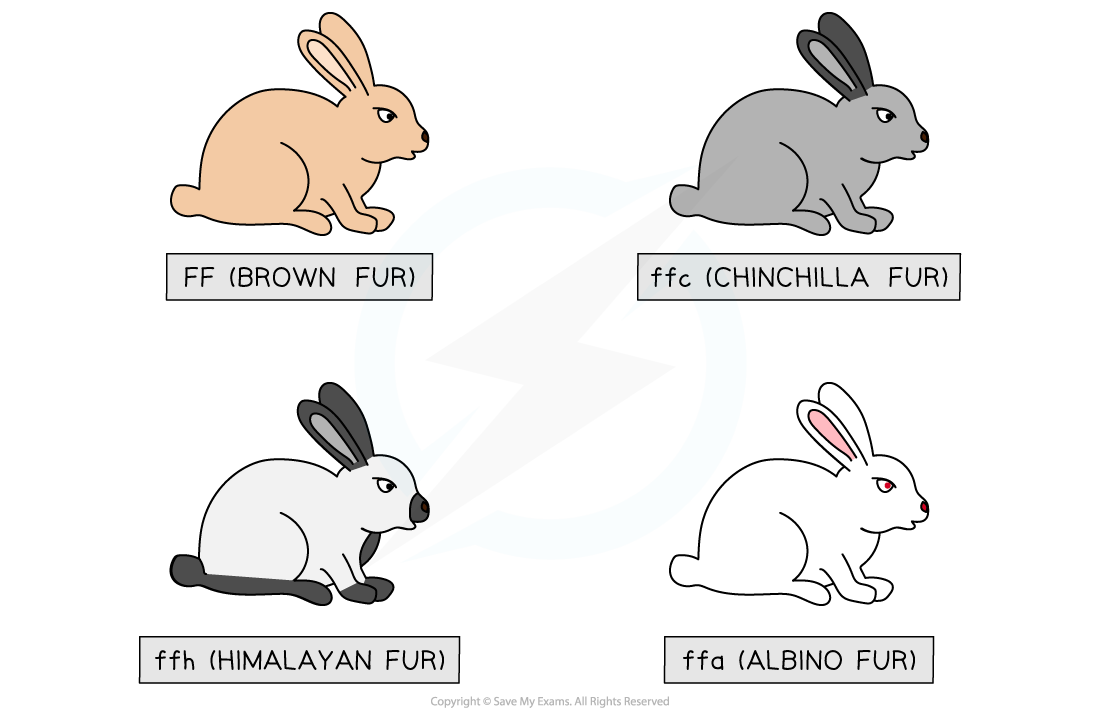Gene Pools
- A gene pool consists of all the genes and their different alleles, present in an interbreeding population
- Some populations of the same species are geographically isolated from each other
- So multiple gene pools can exist for a species
- Individuals in a population tend to have common characteristics and resemble each other
- Two geographically-isolated population may have different characteristics whilst still being the same species
- This is one basis for speciation
- A consideration of all the genes (and alleles thereof) in a population is important as that will govern the genomes of the next generation
- This collection of genes and alleles is commonly called the gene pool
Calculating allele frequencies
- Allele frequencies are defined as the relative abundance of alleles for a particular gene
- Allele frequency is calculated by dividing the number of times the allele of interest is observed in a population by the total number of copies of all the alleles at that particular genetic locus in the population
- Allele frequencies are expressed as a number between 0.0 and 1.0 or as percentages 0 - 100%
- We can think of this as a probability that an allele chosen at random in a given gene will be a particular allele of interest
- The frequencies of all the alleles for a particular gene must add up to 1
- Allele frequencies are expressed as a number between 0.0 and 1.0 or as percentages 0 - 100%
Worked Example
In rabbits, wild-type animals have brown fur, governed by a dominant allele F. However, 3 recessive alleles exist, each of which gives a different fur colour and coverage.
 Wild-type brown rabbits (FF) and three separate recessive-allele-containing rabbits (ffc, ffh and ffa alleles)
Wild-type brown rabbits (FF) and three separate recessive-allele-containing rabbits (ffc, ffh and ffa alleles)
Four separate alleles comprise the gene pool that determines fur colour in this population:
F = brown fur
fc = chinchilla fur
fh = Himalayan fur
fa = albino fur
The albino fur allele (fa) is four times more frequent in this population than the Himalayan fur allele (fh). Use this information to complete the table below.
Step 1: Calculate the sum of the allele frequencies given
Allele frequencies (F + fc) = 0.84 + 0.06 = 0.90
Step 2: Work out the sum of the remaining allele frequencies
All possible allele frequencies must add up to 1, so allele frequencies (fh + fa) = 1.0 - 0.9 = 0.1
Step 3: Apply the 4:1 ratio of albino allele: Himalayan allele given in the question
0.1 split in a 4:1 ratio is 0.08 : 0.02 for the alleles fa : fh
Step 4: Complete the table with these frequencies

Allele frequencies (F + fc) = 0.84 + 0.06 = 0.90
Step 2: Work out the sum of the remaining allele frequencies
All possible allele frequencies must add up to 1, so allele frequencies (fh + fa) = 1.0 - 0.9 = 0.1
Step 3: Apply the 4:1 ratio of albino allele: Himalayan allele given in the question
0.1 split in a 4:1 ratio is 0.08 : 0.02 for the alleles fa : fh
Step 4: Complete the table with these frequencies

Stable gene pools
- Populations retain a stable gene pool under the following conditions
- The population is large
- Each individual in the population has an equal chance of mating
- That matings are random
- There are no selective pressures acting upon individuals based on their phenotype
- A stable gene pool means that a population is not evolving
Exam Tip
Avoid confusing allele frequency with phenotype frequency; they mean very different things. An allele can have a high frequency but if it is recessive, it may only be expressed in a minority of the phenotypes of the population.
